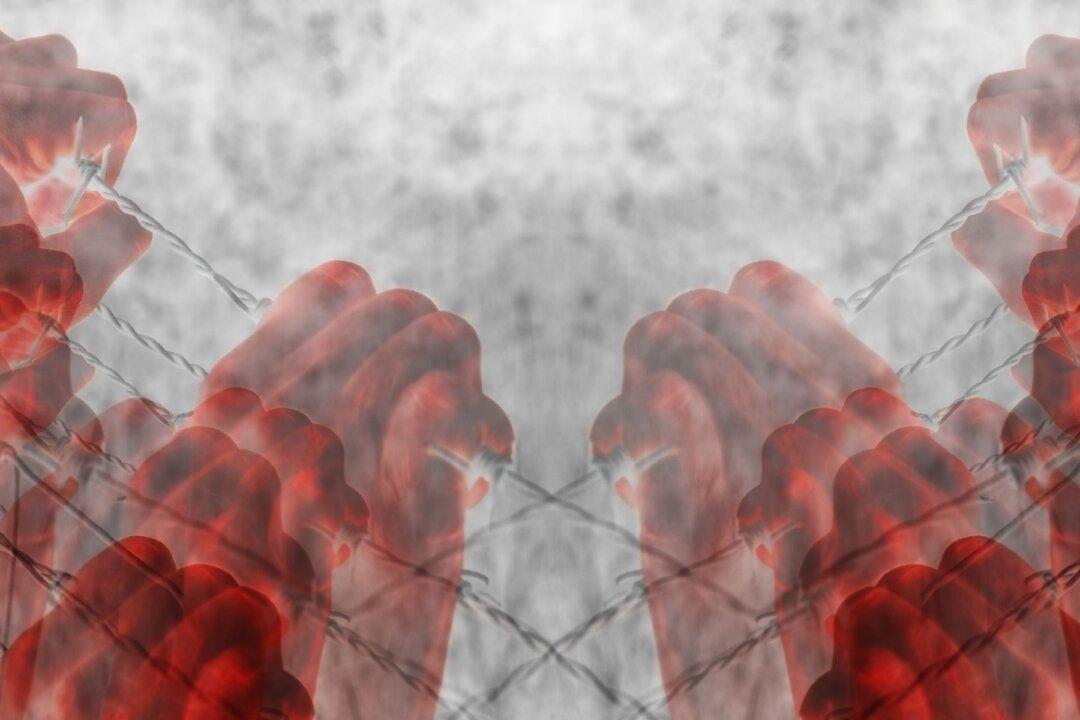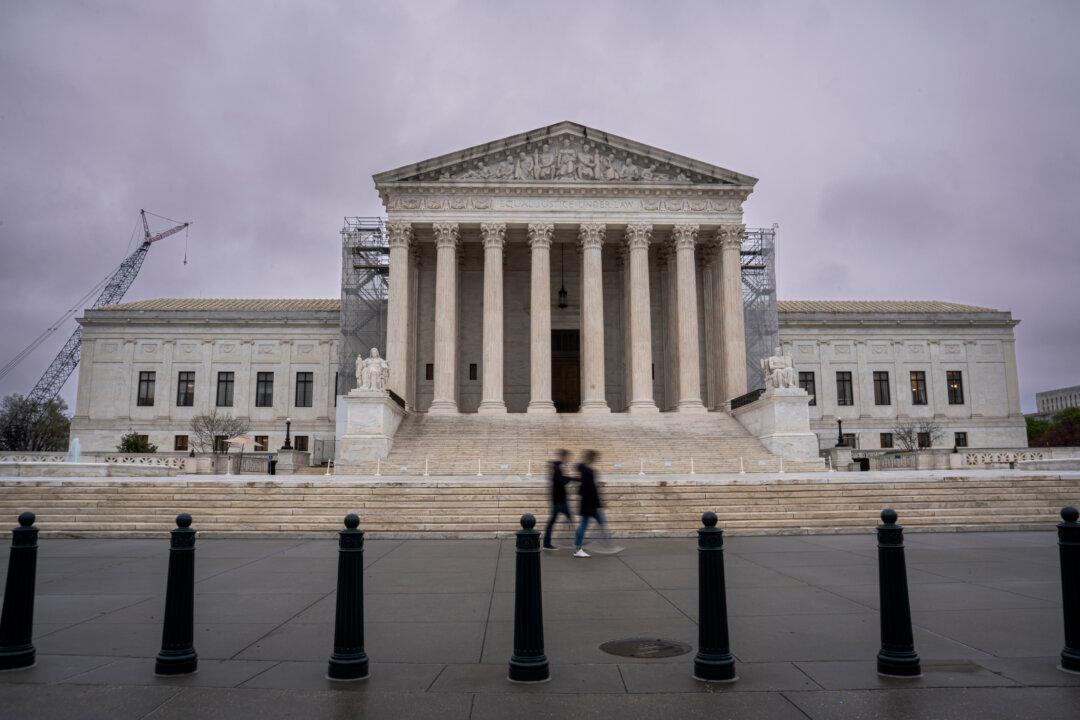A few weeks ago I had the pleasure of speaking at Loyola Marymount University in Los Angeles alongside my friend and colleague, Dr. Jay Bhattacharya. A month prior, we had also lectured together also at a conference in Rome (which, alas, was not recorded). Fortunately, the LA talks were—link below.
In recognition of his consequential research focusing on the economics of health care around the world with a particular emphasis on the health and well-being of vulnerable populations, Loyola Marymount University presented him with the 16th Doshi Bridgebuilder Award on September. Named for benefactors Navin and Pratima Doshi, the award is given annually to individuals or organizations dedicated to fostering understanding between cultures, peoples and disciplines.
Upon receipt of the award, Jay gave a lecture exploring “The Economic and Human Impact of the COVID-19 Pandemic and Policy Responses.” I was invited to give a twenty-minute commentary following Jay’s lecture. You can find both talks here (after a long introduction, Jay’s lecture starts at 27:50 and my remarks start at 1:18:30):
I don’t have a transcript of Jay’s talk, but for those who prefer to read rather than watch or listen, here is a longer version of my remarks:
From the lepers in the Old Testament to the Plague of Justinian in Ancient Rome to the 1918 Spanish Flu pandemic, COVID represents the first time ever in the history of managing pandemics that we quarantined healthy populations. While the ancients did not understand the mechanisms of infectious disease—they knew nothing of viruses and bacteria—they nevertheless figured out many ways to mitigate the spread of contagion during epidemics. These time-tested measures ranged from isolating the symptomatic to enlisting those with natural immunity, who had recovered from the illness, to care for the sick.[i]
Lockdowns were never part of conventional public health measures. In 1968, an estimated one to four million people died in the H2N3 influenza pandemic; businesses and schools stayed open and large events were never cancelled. Until 2020 we had not previously locked down entire populations. We did not do this before because it does not work; and it inflicts enormous collateral damage (as we just heard from my colleague Dr. Bhattacharya).
When Drs. Fauci and Birx, leading the U.S. President’s coronavirus task force, decided in February 2020 that lockdowns were the way to go, the New York Times was tasked with explaining this approach to Americans. On Feb. 27, the Times published a podcast, which began with science reporter Donald McNeil explaining that civil rights had to be suspended if we were going to stop the spread of COVID. The following day, the Times published McNeil’s article, “To Take On the Coronavirus, Go Medieval on It.”[ii]
The article did not give enough credit to Medieval society, which sometimes locked the gates of walled cities or closed borders during epidemics, but never ordered people to stay in their homes, never stopped people from plying their trade, and never isolated asymptomatic individuals. No, Mr. McNeil, lockdowns were not a Medieval throwback but a wholly modern invention. In March of 2020, lockdowns were an entirely de novo experiment, untested on human populations.
It’s hard to overstate the novelty and folly of what happened worldwide in March of 2020. We were introduced not just to a new and previously untested method of infection control. More than this, we embraced a new paradigm for society—one that had been decades in the making, but that would have been impossible just a few years prior. What descended upon us was not just a novel virus but a novel mode of social organization and control—what I call the biomedical security state, the “New Abnormal.”
Changes ushered during lockdowns were signs of a broader social and political experiment, “in which a new paradigm of governance over people and things is at play,” in the words of Italian philosopher Giorgio Agamben.[iii] This new biosecurity paradigm began to emerge twenty years earlier in the wake of the terrorist attacks in the U.S. on Sept. 11, 2001.
Biomedical security was previously a marginal part of political life and international relations but assumed a central place in political strategies and calculations after these attacks. Already in 2005, for example, the WHO grossly over-predicted that the bird flu (avian influenza) would kill two to fifty million people. To prevent this impending disaster, the WHO made recommendations that no nation was prepared to accept at the time, which included the proposal of population-wide lockdowns.
Even earlier, in 2001, Richard Hatchett, a CIA member who served on George W. Bush’s National Security Council, was already recommending obligatory confinement of the entire population in response to biological threats. Dr. Hatchett now directs the Coalition for Epidemic Preparedness Innovations (CEPI), an influential entity coordinating global vaccine investment in close collaboration with the pharmaceutical industry, the World Economic Forum (WEF), and the Bill and Melinda Gates Foundation. Like many other public health officials, today Hatchett regards the fight against COVID-19 as a “war,” on the analogy to the war on terror.[iv]
Although lockdowns and other biosecurity proposals were circulating by 2005, mainstream public health did not embrace the biosecurity model until COVID. Donald Henderson, who died in 2016, was a giant in the field of epidemiology and public health. He was also a man whose prophetic warnings in 2006 we chose to ignore in 2020. Dr. Henderson directed the ten-year international effort from 1967–1977 that successfully eradicated smallpox, then served 20 years as Dean of Public Health at Johns Hopkins. Toward the end of his career, Henderson worked on national programs for public health preparedness and response following biological attacks and national disasters.
In 2006, Henderson and his colleagues published a landmark paper.[v] This article reviewed what was known about the effectiveness and practical feasibility of a range of actions that might be taken in response to a respiratory virus pandemic. This included a review of proposed biosecurity measures—later utilized for the first time during COVID—including “large scale or home quarantine of people believed to have been exposed, travel restrictions, prohibitions of social gatherings, school closures, maintaining personal distance, and the use of masks.” Even assuming an infection fatality rate of 2.5 percent, roughly equal to the 1918 Spanish flu but far higher than the IFR for COVID, Henderson and his colleagues nevertheless concluded that all these mitigation measures would do far more harm than good.
Henderson and his colleagues concluded their review by endorsing this traditional principle of good public health: “Experience has shown that communities faced with epidemics or other adverse events respond best and with the least anxiety when the normal social functioning of the community is least disrupted.” Quite obviously, we did not heed any of this advice in March of 2020. We instead forged ahead with lockdowns, masks, school closures, social distancing, and the rest. When faced with COVID, we rejected time-tested principles of public health and embraced instead the untested biosecurity model.
According to the biosecurity paradigm, a kind of overbearing medical terror was deemed necessary to deal with worst-case scenarios, whether for naturally occurring pandemics or biological weapons. Drawing on the work of French historian of medicine Patrick Zylberman, we can summarize the characteristics of the emerging biosecurity model, in which the political recommendations had three basic characteristics:
1. measures were formulated based on possible risk in a hypothetical scenario, with data presented to promote behavior permitting management of an extreme situation; 2. “worst case” logic was adopted as a key element of political rationality; 3. a systematic organization of the entire body of citizens was required to reinforce adhesion to the institutions of government as much as possible.
The intended result was a sort of super civic spirit, with imposed obligations presented as demonstrations of altruism. Under such control, citizens no longer have a right to health safety; instead, health is imposed on them as a legal obligation (biosecurity).[vi]
This precisely describes the pandemic strategy we adopted in 2020.
1. Lockdowns were formulated based on discredited worst-case-scenario modeling from the Imperial College London. 2. This failed model predicted 2.2 million immediate deaths in the United States. 3. Consequently, the entire body of citizens, as a manifestation of civic spirit, gave up freedoms and rights that were not relinquished even by the citizens of London during the bombing of the city in World War II (London adopted curfews but never locked down).
The full significance of what transpired in 2020 may have escaped our attention. Perhaps without realizing it, we lived through the design and implementation of not just a novel pandemic strategy but a new political paradigm. This system is far more effective at controlling populations than anything previously attempted by Western nations. Under this novel biosecurity model, “the total cessation of every form of political activity and social relationship [became] the ultimate act of civic participation.”[vii] Quite the contradiction.
Neither the pre-war Fascist government in Italy nor the Communist nations of the Eastern Bloc ever dreamed of implementing such restrictions. Social distancing became a political model, the new paradigm for social interactions, “with a digital matrix replacing human interaction, which by definition from now on will be regarded as fundamentally suspicious and politically ‘contagious.’”[viii]
Actual contagion risk depended on the total time spent in a room with an infected person and was mitigated by opening windows and other methods of improved ventilation, not by staying six feet apart. Plastic protective barriers erected everywhere actually increased the risk of viral spread by impeding good ventilation. We had already been psychologically primed for over a decade to accept pseudo-scientific practices of social distancing by using digital devices to limit human interactions.
It would be hard to devise a better method than the widespread myth of asymptomatic spread, combined with the practice of confining the healthy, to destroy the fabric of society and to divide us. People who are afraid of everyone, who are locked down, who are isolated for months behind screens, are easier to control. A society grounded on “social distancing” is a manifest contradiction—it’s a kind of anti-society.
Consider for example the “Alone Together” public service announcement produced for the U.S. government in March of 2020.[xi] The ad read, “Staying home saves lives. Whether you have COVID-19 or not, stay home! We’re in this together. #AloneTogether.” The very conjunction of these two words, a manifest contradiction, is enough to demonstrate the absurdity. Besides not actually saving lives, being told that we were fulfilling a social duty by being alone did not mitigate any of the adverse consequences of loneliness. A hashtag where we could be “alone together” on screens was no remedy.
Notes
[i] Harper, K. The Fate of Rome: Climate, Disease, and the End of an Empire. Princeton University Press, 2019.[iii] Agamben, G. (2021). “Biosecurity and Politics.” Strategic Culture.
[iv] Escobar, P. (2021). “How Biosecurity Is Enabling Digital Neo-Feudalism.” Strategic Culture.
[v] Inglesby, T; Henderson, D.A.; et al., “Disease Mitigation Measures in the Control of Pandemic Influenza,” Control of Pandemic Influenza,” Biosecurity and Terrorism: Biodefense Strategy, Practice, and Science, 2006;4(4):366-75. doi: 10.1089/bsp.2006.4.366. PMID: 17238820
[vi] Agamben, G. (2021). “Biosecurity and Politics.” Strategic Culture.
[vii] Ibid.
[viii] Escobar, P. (2021). “How Biosecurity Is Enabling Digital Neo-Feudalism.” Strategic Culture.
[ix] Madewell ZJ, Yang Y, Longini IM Jr., Halloran ME, Dean NE. “Household Transmission of SARS-CoV-2: A Systematic Review and Meta-analysis.” JAMA Network Open. 2020 Dec 1;3(12):e2031756. doi: 10.1001/jamanetworkopen.2020.31756. PMID: 33315116; PMCID: PMC7737089.
[x] Arendt, H. The Origins of Totalitarianism. New Ed. with Added Prefaces, New York, NY: Harcourt Brace Jovanovich, 1973, p. 478.
[xi] “Covid-19 PSA—Alone Together—Youtube,” May 24, 2020.



